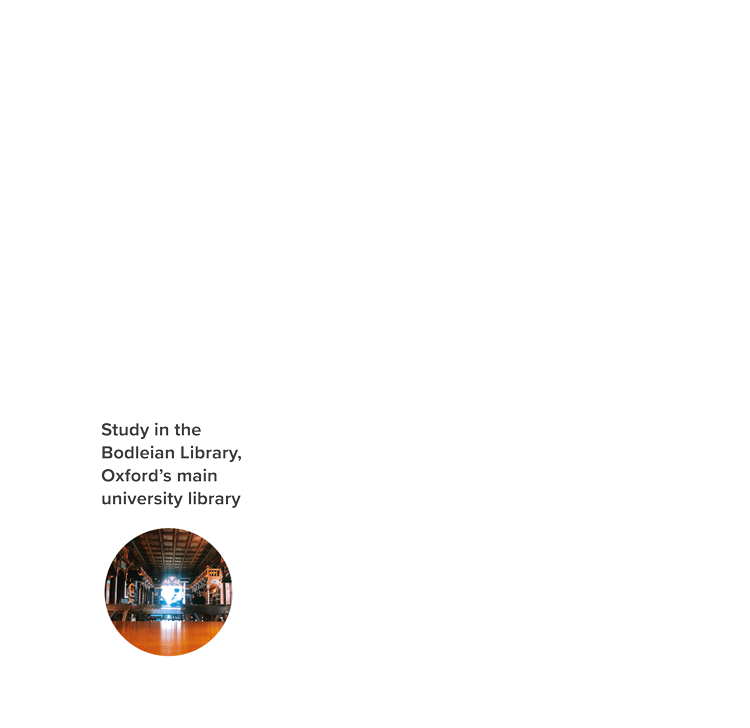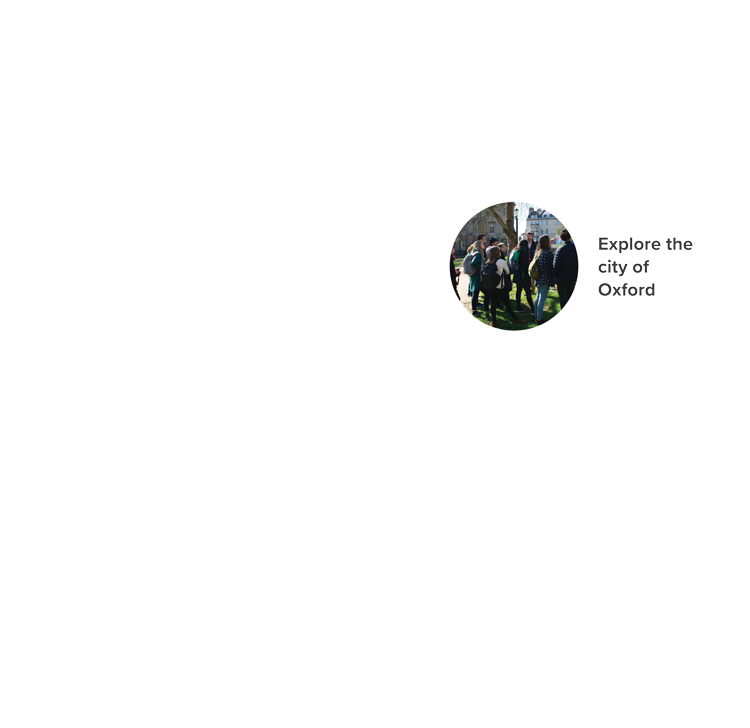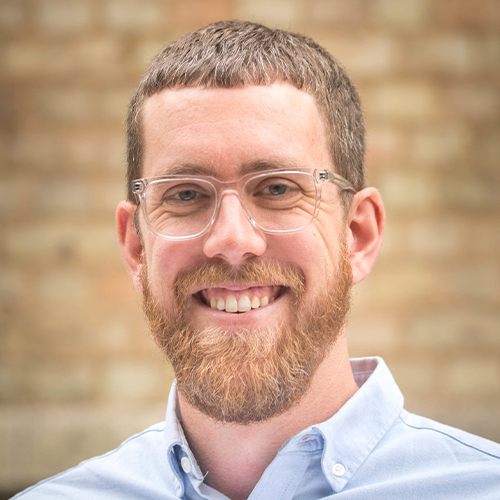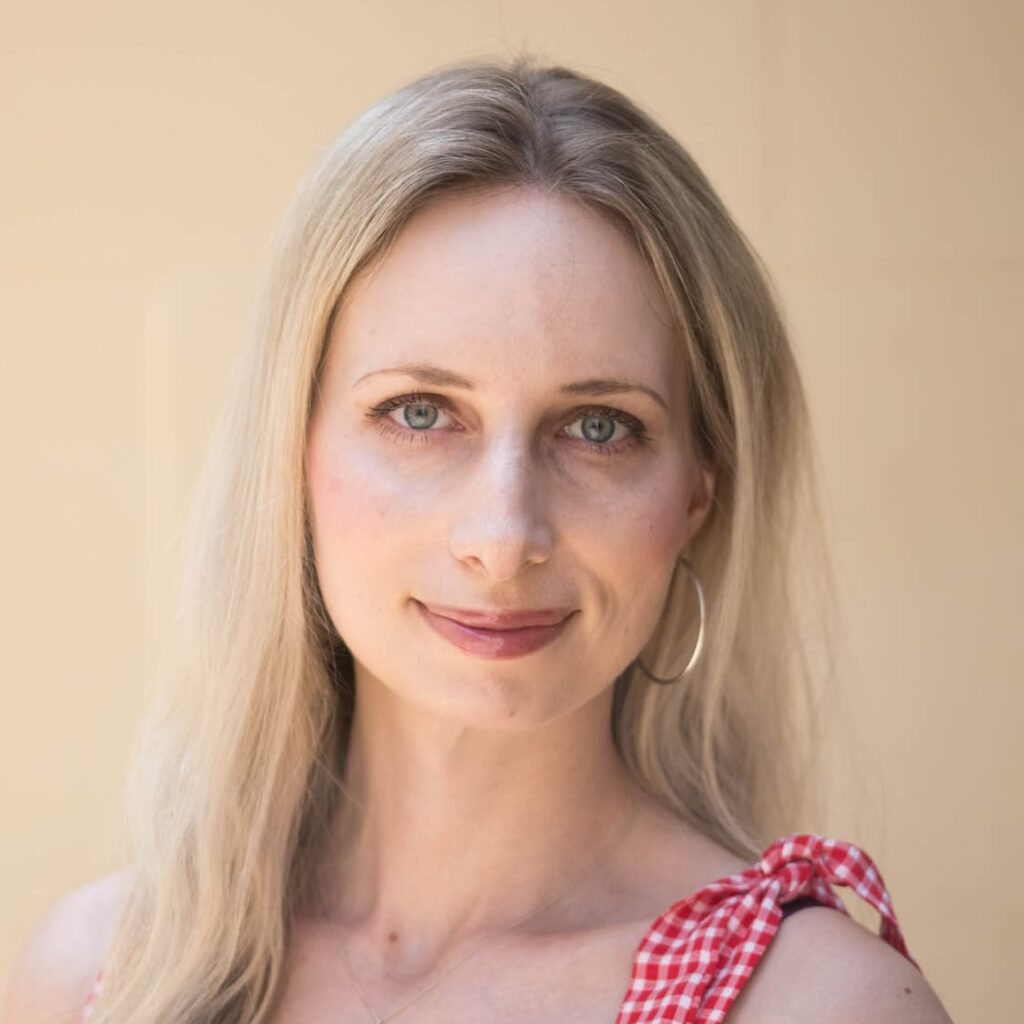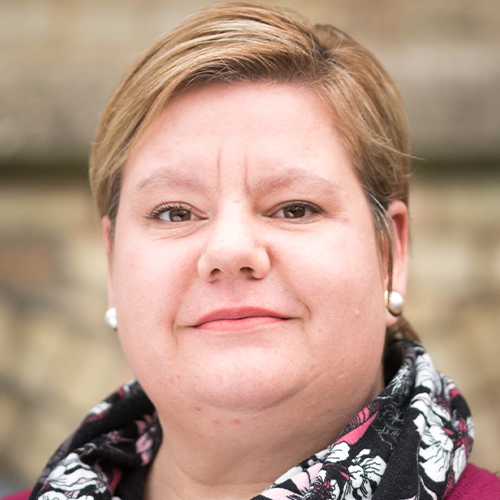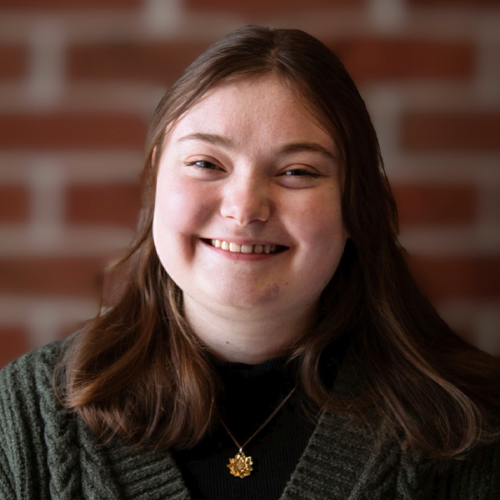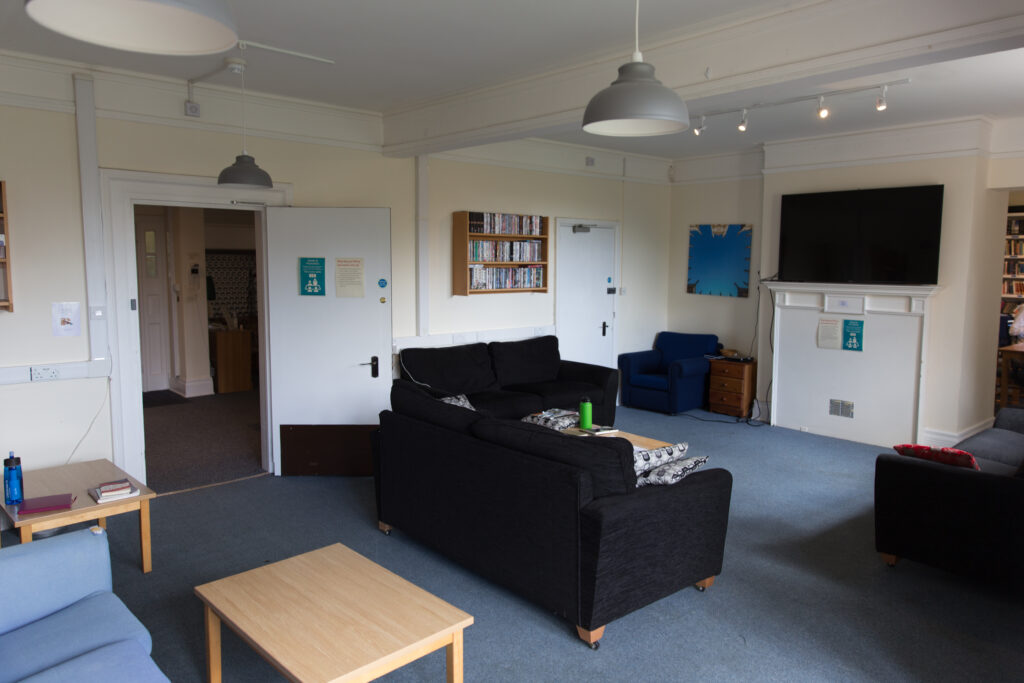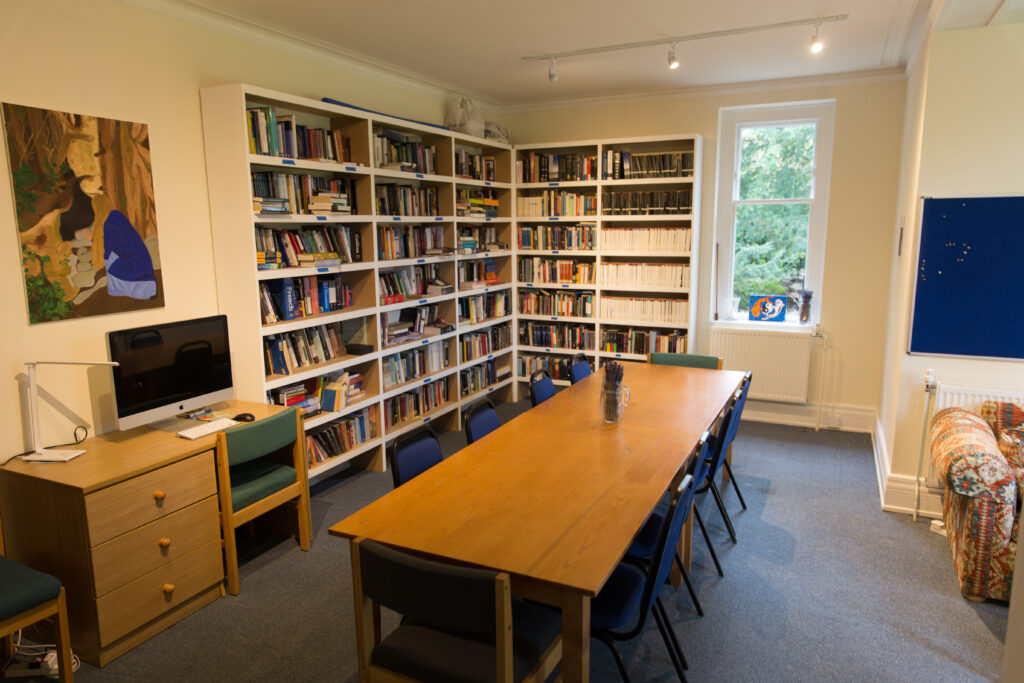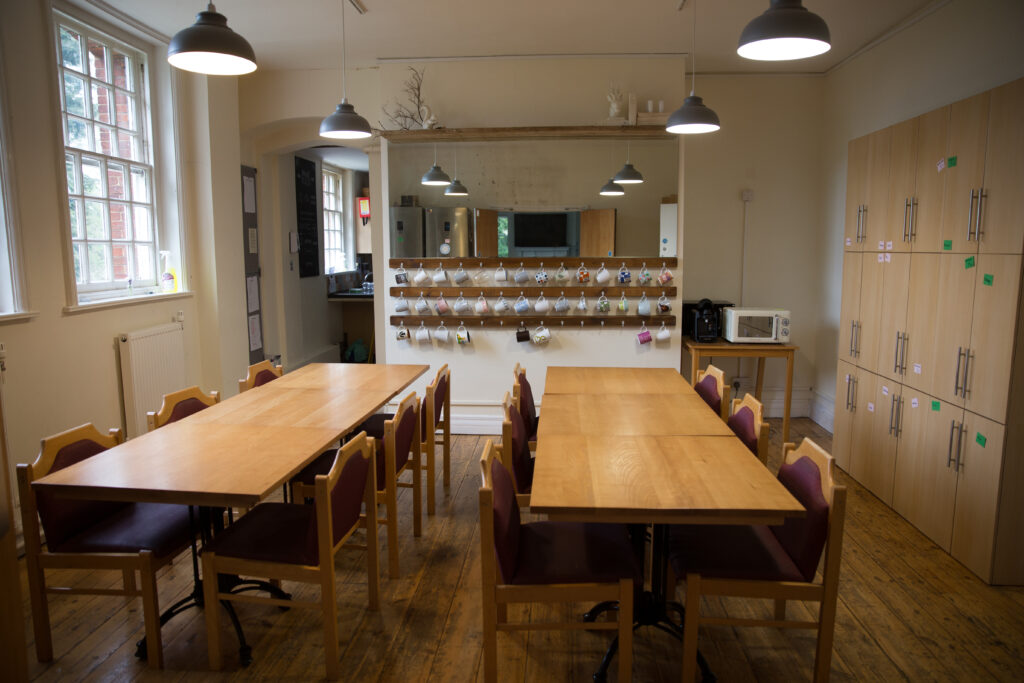We welcome you to the “city of dreaming spires” and a summer at Scholarship and Christianity in Oxford (SCIO). As a student in Oxford, you’ll discover what so many people across the world have found to be the most academically exhilarating experience of their life. Study in the heart of an ancient academic city and challenge your mind and heart.
Connect With SCIO
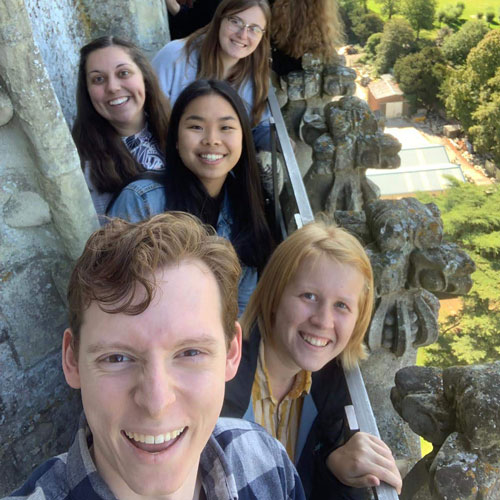
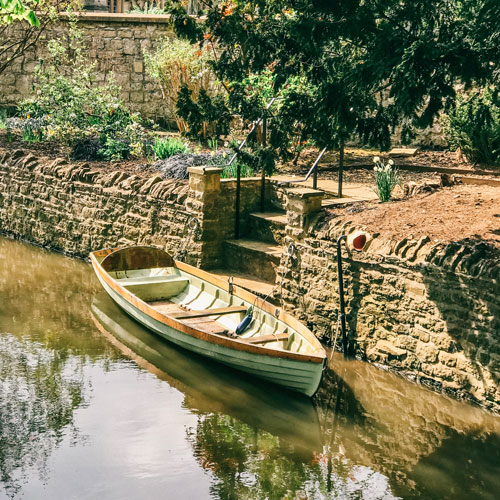
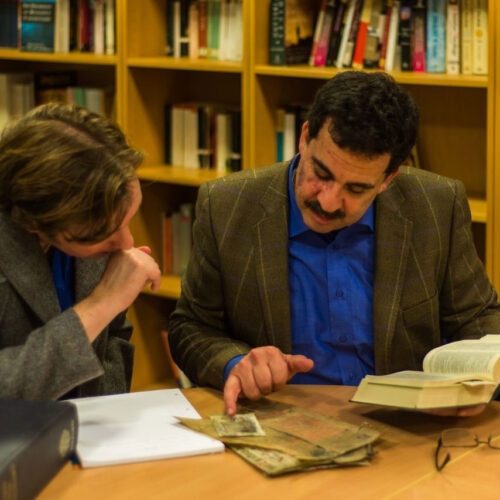
Dear Prospective Scholars,
Thank you for looking at Scholarship and Christianity in Oxford’s (SCIO) offerings. Whether you are considering a summer or semester programme, we have great opportunities awaiting you.
Oxford: the name that conjures up notions of a great medieval city full of dreaming spires and stunning architecture, idiosyncratic practices, renowned authors who have made their way into the canons and literary reading lists, great theological debates, and major politicians. The mythic abounds. But even more, the concrete reality of a world-class scholarship is omnipresent: with research; major scientific discoveries; scholars across the disciplines whose works inform most, if not all, academic libraries; students sitting in cafés debating perennial issues and newly breaking ideas alike; and a rich and vibrant student life including music, sport, and drama.
Come sit in a tutorial where you meet one-on-one with a tutor engaged in serious conversation, testing ideas and joining together as junior and senior scholar. This is a learning experience like no other: there is no hiding (for tutee or tutor!), and you probe and digest ideas, coming to your own conclusions with the requirement to demonstrate that your view is valid and solid, even where it diverges from the views of other scholars or your tutor. To accomplish that goal, as a researcher yourself, you will have access to one of the world’s great libraries, the Bodleian Library with holdings in excess of 13 million items.
Join a rich community of scholars who share life together in a variety of forms: from the life of the mind; to cooking a meal together; to traveling on SCIO trips to interesting places like Bath and Hampton Court Palace; or making your own forays into London, up to Scotland, or over to the continent during the mid-term break. Join, too, a community of faith that is engaged in serious learning, affirming the ability to participate in scholarship as Christians dealing with difficult and profound issues.
SCIO offers the opportunity to participate in a great academic experience, prepare for graduate studies (for those headed in that direction), and build your CV with a recognized educational experience that matters to academic institutions and employers alike. As you review the materials on the website, we hope you see the possibilities and consider joining us. With SCIO staff, you will have a resource at hand to help you put your best foot forward as you apply.
Yours with every best wish,

Stan Rosenberg
Executive Director
The SCIO Summer Programme offers students an opportunity to choose two seminars in which participants explore topics in small groups, meet with a tutor for one on one tutorials, and explore the British Isles. The SCIO Summer Programme fuels intellectual minds at all levels of education: undergraduate, post-graduate, professorial, and beyond.
| Required Courses | Credits |
|---|---|
| 3 | |
| 3 | |
| Total Credits | 6 |
Seminars & Tutorials
All students participate in two different seminars. Each summer seminar consists of three discussion classes, four gobbets classes (gobbet is Oxford’s word for a small mouthful of text for close reading or translation and then discussion), and two tutorials. Discussion classes (1 hour) and gobbets classes (45 minutes) are with the seminar leader and a small but varying number of participants. For each class, students read all or parts of assigned texts and then discuss them. Students are evaluated by seminar leaders on the basis of written work. Seminars can be taken for undergraduate credit.
As part of their seminars students participate in individual tutorials during the second part of the programme. While meeting one-on-one with their seminar leader, students develop, discuss, and defend an essay related to the students’ seminar topic. Tutorials are individual meetings of one hour between the seminar leader and each of the seminar participants. In preparation for each tutorial, the student reads assigned texts and writes an essay of 2,000 words in response to a question set by the seminar leader.
ALL SCIO SUMMER PROGRAMME STUDENTS MUST COMPLETE their pre-programme reading before arriving at Oxford. Once your seminars have been confirmed, please ensure you make a prompt start with this reading or you will not be able to make the most of your discussion classes and tutorials.
Field Trips
All students attend field trips and accompanying lectures. Field trips are day-long excursions led by an expert guide to places that have a special significance for the British culture and history, such as Stonehenge and Salisbury, the Cotswolds, Bath, Portsmouth, and Saint Albans.
The SCIO Summer Programme seminars give you the chance to explore your chosen subject in-depth with an expert member of faculty and a small group of committed students. Below, you will find a general description of each seminar that we offer. Once seminar allocation has been confirmed, you will receive advice, about any preparatory reading that you should do.
All students participate in two different seminars. Each summer seminar consists of three discussion classes, four gobbets classes, and two tutorials (gobbet is Oxford’s word for a small mouthful of text for close reading or translation and then discussion). Discussion classes (1 hour) and gobbets classes (45 minutes) are with the seminar leader and a small but varying number of participants. For each class students read all or parts of assigned texts and then discuss them. Students are evaluated by seminar leaders on the basis of written work.
All SCIO Summer Programme students must complete their pre-programme reading before arriving at Oxford. Once your seminars have been confirmed, please ensure you make a prompt start with this reading or you will not be able to make the most of your discussion classes and tutorials.

Study
Welcome to the home of some of history’s greatest thinkers. With discussion classes, lectures, one-on-one tutorials, and access to the world-renowned Bodleian Libraries, every student spends a lot of the time reading … and reading … and reading! If working at one of the best research establishments in the world excites you, then this is the programme for you! The only thing you will do as much as read, is write.
During each tutorial you answer a different question working with an extensive reading list. All students appreciate the chance to focus and specialize. It is exhilarating, head-spinning, and, sometimes, feels a little overwhelming, which is why the programme staff spend so much time making themselves available not only to support and encourage, but also to challenge you to push for new levels of academic achievement.
Housing
The Vines, a modest mansion on the crest of Headington Hill, is situated on 1.5 acres of garden with stunning views of Oxford’s spires. Running parallel to the path of C.S. Lewis’s former commute, The Vines is a 35-minute walk into Oxford city centre, a 10-minute cycle ride, or a 5-minute walk to the nearest bus stop (with buses passing by every 6–7 minutes). Equipped with a large kitchen, laundry facilities, and a well-appointed common room and bathrooms for every 2-3 rooms, The Vines will be your home away from home during the programme.
- Free laundry facilities
- Library with work stations and free printing facilities
- Large common room
- Dining room
- Large kitchen
- Wheelchair access and disability accommodation
- Prayer room
- Free WiFi throughout the property
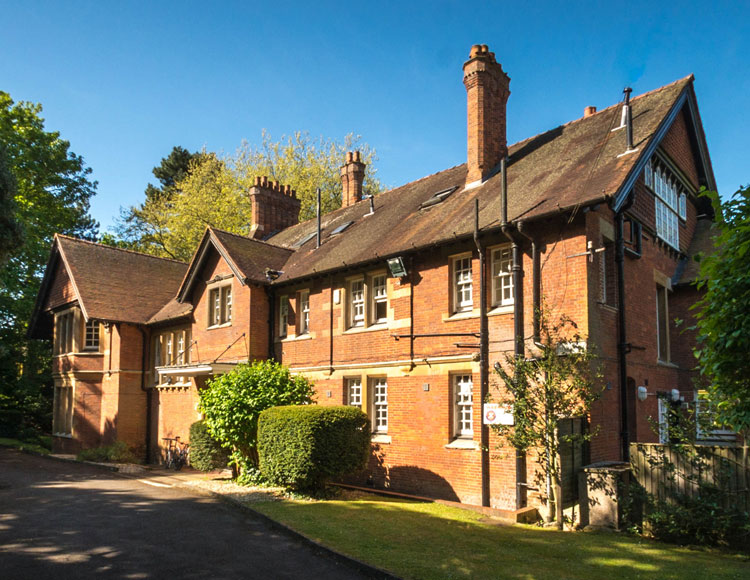
Further details for The Vines
The Vines has been adapted to accommodate students with physical disabilities. This includes the following ground floor facilities: accessible single and double occupancy rooms, an accessible bathroom, all common rooms, kitchen, and both main entrances are equipped with ramps for wheelchair access. SCIO is committed to making reasonable arrangements to enable students to participate as fully as possible in all areas of the programme. Further information about accessibility accommodations are available upon request. Please send any queries to globaled@cccu.org.
The Vines is mixed gender housing, with both single and shared rooms available. Students are only assigned roommates of the same gender and, likewise, bathrooms facilities are only shared with students of the same gender.
Bedrooms
Students are placed in rooms based on their answers to a housing questionnaire that is part of the application process. Rooms range in capacity from singles to quadruples. Below are some examples of typical rooms in the Vines:
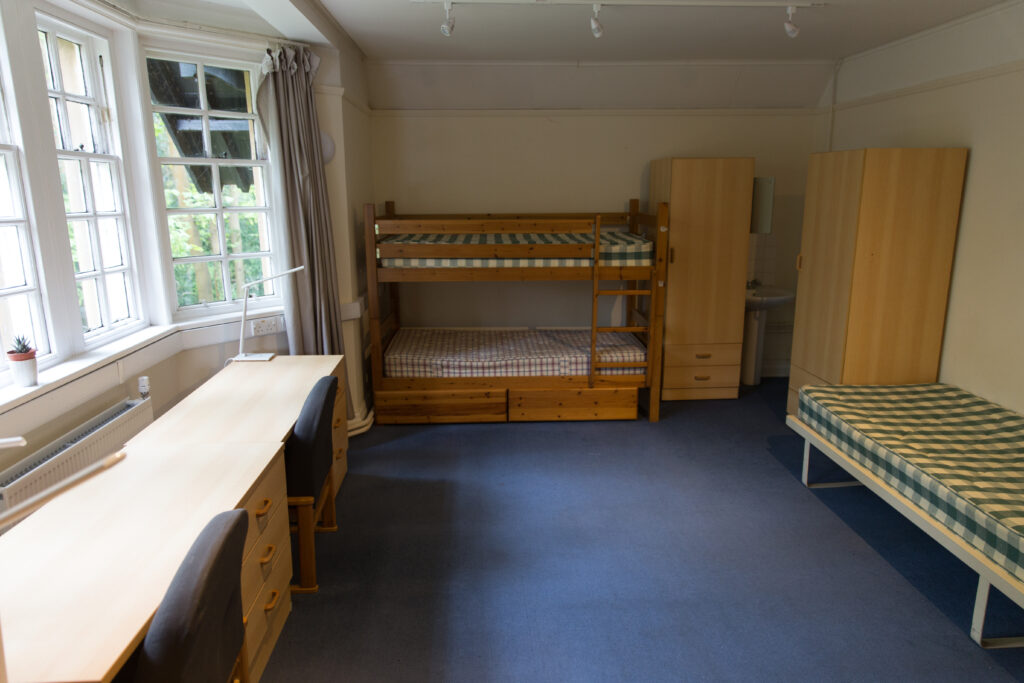 |
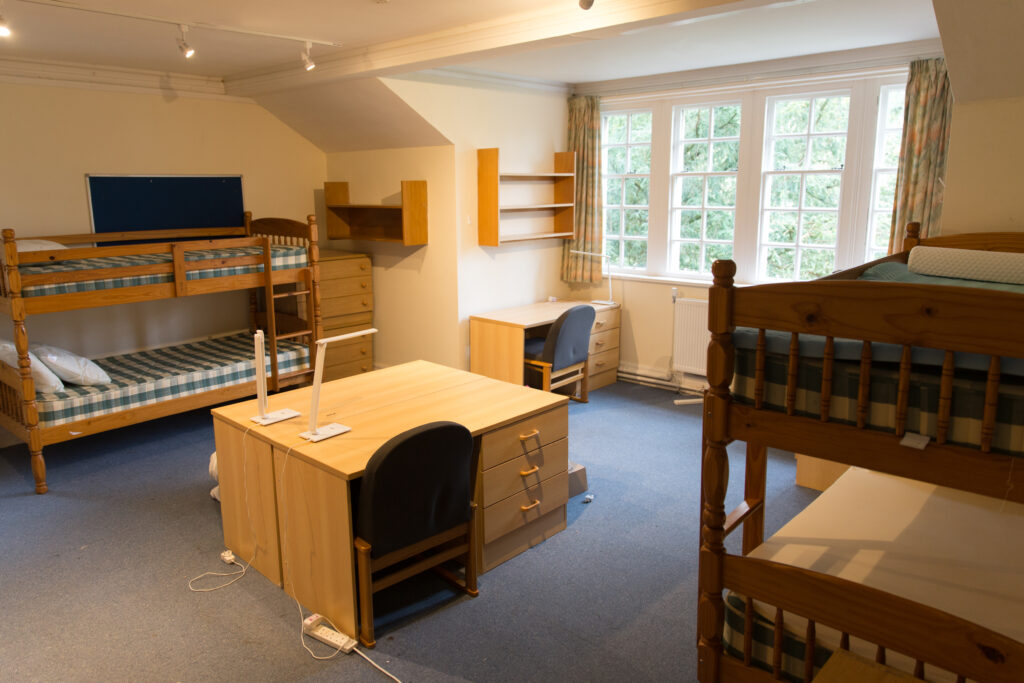 |
Common rooms
In addition to students bedrooms, there are many common rooms that are shared with everyone living at the Vines. At the Vines offers areas for students cook, study, and relax together in a tight knit community.
|
Lounge room |
Library and study room |

Kitchen |
Dining room |
The grounds
Students have full access to the grounds at The Vines. This includes a large back garden with tables and chairs for studying and eating and plenty of space for sporting activities and relaxing.
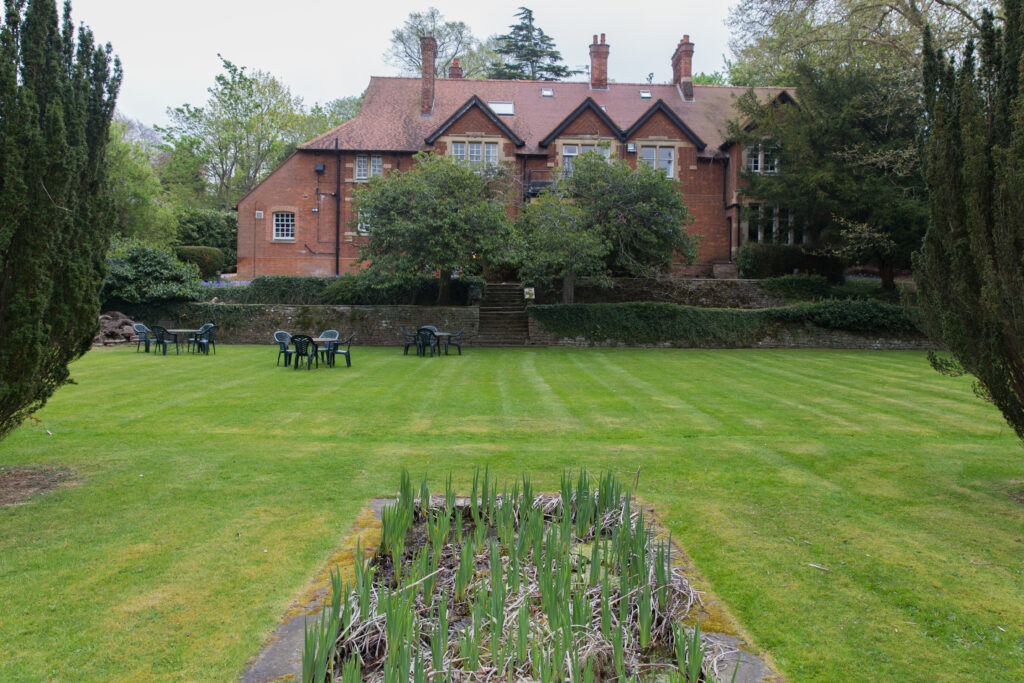 |
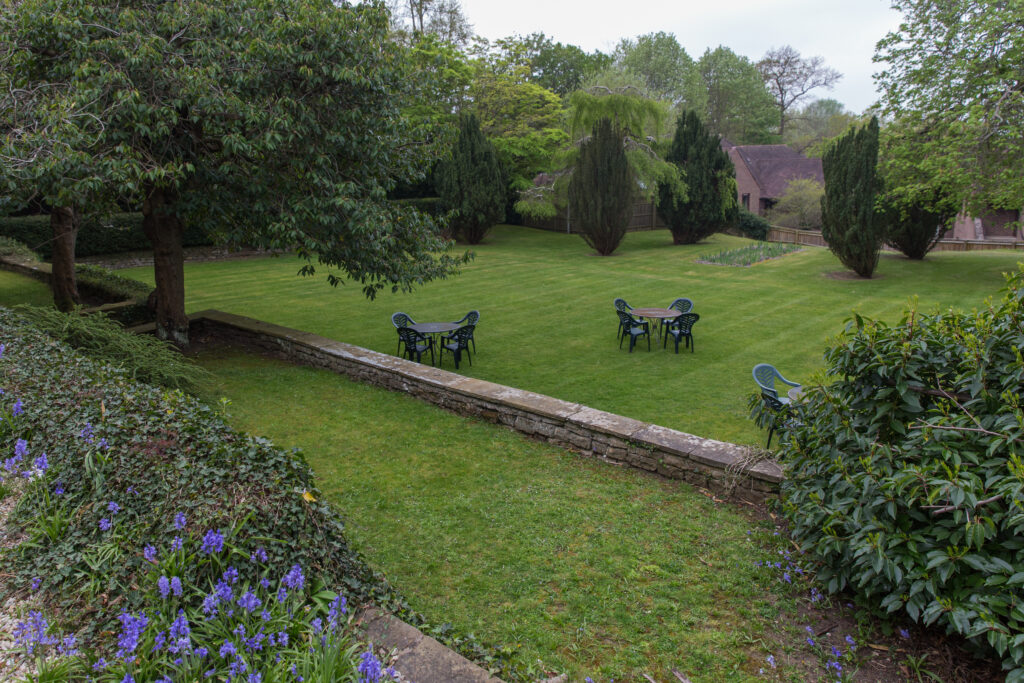 |
Internet Access
Free high speed broadband internet is available throughout the Vines. The Vines has an average download speeds of 50mbps and an upload speed of 18mbps. Login information for the Vines will be provided to you when you move in and is posted throughout the property. The wireless network is checked regularly to ensure there is proper coverage throughout the property.
Environmental Sustainability at the Vines
SCIO is committed to reducing our environmental impact and we encourage our students to follow sustainable practices. We do this through:
- Providing recycling and composting bins and guidance on how to properly recycle at our student housing. Instructions for what can be recycled and composted is posted on the notice board by the main kitchen. An orientation about recycling and composting will be provided by the Junior Dean during the start of the programme.
- Encouraging students to walk and cycle while travelling around Oxford and to take mass public transit while traveling greater distances. Bicycles are provided free of charge to all residents of the Vines to use throughout the programme term.
Libraries and Special Collections
SCIO Summer Programme students have access to one of the greatest libraries in the world. Make use of Bodleian libraries and its large and rapidly growing physical and digital resources.
Additionally, Oxford’s museums and collections are world renowned and provide an important resource for scholars around the world.
Museums and Special Collections
- The Ashmolean Museum of Art and Archaeology houses the University’s extensive collections of art and antiquities. Established in 1683, it is the oldest museum in the U.K. and one of the oldest in the world. It also houses an exceptional collection of prints which can be viewed by any member of the public upon special arrangement.
- The University Museum of Natural History houses the University’s scientific collections. With 4.5 million specimens it is the largest collection of its type outside the national collections.
- The Pitt Rivers Museum holds one of the finest collections of anthropology and archaeology.
- The Museum of the History of Science is housed in the world’s oldest surviving purpose-built museum building. It contains an excellent collection of historic scientific instruments from around the world.
- The Bate Collection of Musical Instruments celebrates the development of musical instruments in the western classical tradition from the medieval period to the present.
- The University of Oxford Botanic Garden is the oldest botanic garden in Britain. It contains the most compact yet diverse collection of plants in the world.
- The Harcourt Arboretum is an informal garden, where the public can enjoy walks and riding their bicycles. It is six miles south of Oxford and forms an integral part of the Botanic Garden’s plant collection.
- The Christ Church Picture Gallery houses an important collection of Old Master paintings and almost 2,000 drawings in a gallery of considerable architectural interest.
- Modern Art Oxford is the largest collection of modern and contemporary art in the Southeast region of Britain.
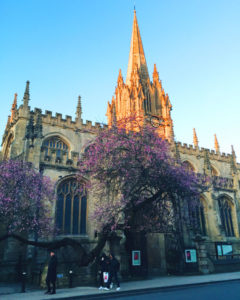 Spiritual Life
Spiritual Life
SCIO’s spiritual mission is first to demonstrate that personal faith in Christ can flourish within an academically rigorous environment; can operate in a public university; and interacts with scholarship but not necessarily in ways that are obvious and easily labelled. Second, to help students acquire the maturity, vision, confidence, and skills to study in a public research university and to encourage scholarly reflection in religious contexts and in a public, non-religious environment.
Learning to study alongside and under those of different religious beliefs (or, in many cases, none) is challenging. We encourage this by offering ourselves as mentors/examples, creating an atmosphere of independence in which students can develop such a vision and ability, and offering nurture by staff who are engaged and committed.
All students are encouraged to find a church to attend in Oxford. Apart from the spiritual nourishment that comes from remaining involved in regular worship, church is a great place to meet other students and residents of the town, and creates opportunities for you to get to know the people in your community. Many students on the programme make a point of attending a church whose style is markedly different from that which they usually attend at home, while other students find it a great comfort to attend a service whose style is more familiar, and all students should think about what might best suit them while they are here.
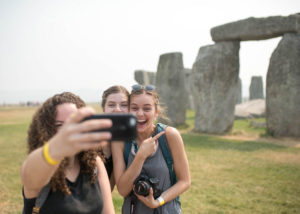 See, Experience, Explore
See, Experience, Explore
Alongside the field trips organized as part of the programme, there are opportunities for students to explore other parts of the UK. The costs associated with non-academic trips are the responsibility of each student. In the past, these outings have proven to be a great break from studying and a chance to explore more of the British landscape. You may also wish to follow an itinerary below on your own or with a friend!
Exploring Oxford and Beyond
Oxford
Oxford is one of the most beautiful cities in the world. While in Oxford you will have access to libraries that have been established for over 800 years, as well as the city’s its museums, bookshops, and entertainment venues. Discover some of the amazing art available on view in Oxford with an art-walk: explore Christ Church Picture Gallery, and visit the famous “Light of the World” by Edward Burne-Jones hidden away in the chapel at Keble College. Over your time at Oxford, various plays are put on in the evenings, which are fun to attend as a group.
Blenheim Palace
Spend the day wandering the grounds of Blenheim Palace: a world heritage site, home of the eleventh duke of Marlborough, and the birthplace of Sir Winston Churchill. The palace dates from 1705 and is set in a park designed by Capability Brown. Next to the grounds is the village of Bladon, where we visit Winston Churchill’s grave. Complete the afternoon with tea at the wonderful Bladon Tea Rooms in Woodstock.
Port Meadow
Enjoy a beautiful afternoon stroll (weather permitting) through Oxford’s Port Meadow—frequented by grazing horses—and end at the famous Trout Inn for a meal of fish and chips.
Bath
Stroll through the Roman streets of Bath, taking in all of its architectural beauty. Visit the Roman Baths and the great Abbey, and follow in the footsteps of one of Bath’s most famous inhabitants, Jane Austen. End the day with tea at Sally Lunn’s tea-room in the oldest house in Bath.
C.S. Lewis’s Home
Enjoy an afternoon visit to The Kilns, C.S. Lewis’s home in Headington. After touring the house and grounds, visit his parish church, Holy Trinity, where he is buried and commemorated with beautifully etched Narnia windows.
Burford
Burford is a small historic village with one of the most prized parish churches the country, dating from the 1100s (although the site has been a place of Christian worship since the 600s). Walk through the countryside to visit the deserted medieval village of Widford, a once-thriving community that was wiped out by the plague during the 14th century and never recovered. The 12th-century church is all that remains, and is situated in the middle of a field without any access except by foot.
Dorchester
Once a major political and ecclesiastical centre, Dorchester is now a sleepy town with one of the most fascinating churches (once an abbey) in the country. Walk through the woods and up an Iron Age hill fort (dating from the 4th century BC) with some of the most spectacular views in Oxfordshire. Plus another f14th-century church to explore along the way! Cross the Little Wittenham Bridge, used for the official World Poohsticks Championships.
London
During their time in Oxford, many students find themselves drawn to sites and attractions in London, which is less than an hour by train, or 90 minutes by bus. In one day, students often manage to explore aristocratic London and the royal parks, and go past Buckingham Palace, Big Ben, Westminster, and Downing Street before stopping to spend some time in the National Gallery and the National Portrait Gallery at Trafalger Square. After lunch, you can walk around some of the older part of the City of London, including an optional climb up the Monument (a large Corinthian column with panoramic views over London from its top) and a walk past the Tower of London and Tower Bridge. Then go to St Paul’s Cathedral for evensong, where you can hear one of the finest all-boys choirs in the world. Don’t forget to have dinner before heading back home. Phew! And that is only a minute selection of the many opportunities there are to explore whatever might be your heart’s desire in this remarkable city. Some students have chosen to supplement their research by taking advantage of their free access to the holdings of the British Library in London and the National Archives at Kew, near London.
Weather
Summers in Oxford are typically cool and mild and compare to what you could experience in the Pacific Northwest of the U.S. You will enjoy plenty of moments full of sunshine, allowing you to read and study outside in the sleepy warm sun. You should also be prepared for some rain and misty days though, so be sure you have a rain jacket and trusty umbrella.
 Tea (and Food)
Tea (and Food)
Drinking tea is a vital element in the rhythm of the English person’s day, and all students are encouraged to discover this for themselves. Its popularity is perhaps explained in part by the cakes and biscuits that traditionally accompany this drink. Students will be invited to tea at regular times during the week, and it is an important time to relax, catch up with each other, and recharge for the rest of the day!
Apart from a few lunches and dinners organized as part of the programme, all students will need to prepare their own meals while in Oxford. This means shopping at one of the main supermarkets, going to the weekly fresh farmer’s market, or visiting the Covered Market, established in 1774. Many students form food groups that take turns to cook for each other and eat together at the end of each day. It is a great way to share with others what they have discovered that day, and also to hear what everyone else has been doing!
There are plenty of places to eat out in Oxford, ranging from the affordable to the expensive. The café in St Mary’s Church is a fun place to visit, as the café itself is in the Old Congregation House. It dates from the 14th century and was built a couple of hundred years after the colleges first started taking in students.
Alumni
When the programme is all said, done, debated, and graded, you’ll return home with a community of alumni that continually reconnect over the bond that Oxford so passionately unites. Learn more about what alumni are up to on the SCIO website.
The SCIO Summer Programme is an interdisciplinary programme that gives no preference to students in any particular field of study. However, a good academic record is necessary: generally a minimum GPA of 2.9 on a 4.0 scale is required, though in the case of non-traditional students this may be reviewed (note this GPA requirement differs from that of the SCIO Semester Programme), and SCIO may accept any exceptional student it believes can meet the rigorous demands of the program.
SCIO aims to provide an inclusive environment which promotes equality, values diversity, and maintains a working, learning and social environment in which the rights and dignity of all its staff and students are respected to assist them in reaching their full potential.
The SCIO Summer Programme is designed for rising college sophomores, juniors, and seniors; non-traditional students; teachers; and those enrolled in continuing education programs.
How Do I Apply?
Simply complete an online application for the semester during which you plan to participate. Each campus makes its own policies regarding off-campus study, so you should consult your academic dean, off-campus study coordinator, and/or advising faculty member at your school to ensure completion of all campus requirements.
Before your application can be reviewed for admission, you must submit all of the following materials:
- A completed online application form
- $50 application fee (payable by check or credit card)
- Two faculty references
- One character reference
- Official transcript(s) of all college course work
- Off-campus approval form
AFTER ACCEPTANCE:
Once admitted into the programme, you will be required to confirm your intent to participate by submitting a non-refundable $500 confirmation fee, which will be applied toward your program tuition.
You will also be required to complete additional confirmation and pre-departure materials, including but not limited to: waiver and liability forms, a medical information form, a housing form, and proof of international medical insurance. But don’t worry! We will send you all the details and instructions on your acceptance.
Summer 2025 Term Dates:
Rolling Admissions
| Application available until (or spots are filled) | May 31 |
| SCIO begins on arrival | June 13 |
| SCIO concludes | July 12 |
HOW MUCH DO I PAY & WHAT’S INCLUDED?
Deposits:
Typically, the only expenses SCIO Summer Programme participants pay directly to the CCCU are the application fee ($50) and the non-refundable confirmation fee ($500, deducted from the total housing fee at invoicing).
Program Fees:
About six weeks before the term begins, the CCCU sends participation invoices to each home campus. For summer 2025, that bill will feature the below SCIO Summer Programme fees.
| SCIO SUMMER PROGRAMME FEES | |
|---|---|
| Instructional Fees | $4,990 |
| Room | $2,625 |
| TOTAL SUMMER FEES | $7,615 |
| Confirmation Deposit | ($500) |
| BALANCE OF SUMMER FEES | $7,115 |
Keep in mind the total programme costs billed to you through your school may differ, depending on your campus’s policies.
Note: Schools or individuals who pay with a credit card will also be charged a credit card service fee.
Expenses Covered by SCIO Summer Programme Fees:
- Tuition for recommended 6 hours of credit, including one-on-one tutorials, seminar classes, and a lecture series
- Room and partial meals
- International medical coverage for the duration of the programme
- All necessary expenses for official field trips
- Use of programme computers, unlimited wireless internet access, and printing facilities
- Free on-site laundry facilities (must provide own detergent, etc.)
- Social events including afternoon teas with staff and other funded student events
Additional Anticipated Expenses*:
- Travel between home and Oxford
- Meals
- Books
- Personal medical expenses, if incurred, including preparatory vaccinations
- Local transportation
- Personal discretionary expenditures
International Travel
Participants are responsible for arranging travel to and from Oxford. Student housing check-in time is between 9 a.m. and 5 p.m. on arrival day; departure is before 11 a.m. on checkout day. Student accommodations are closed outside of official programme dates/times. Travel information from London’s major airports to SCIO Summer Programme housing is provided in a pre-departure packet.
HOW DOES BILLING WORK FOR SCIO SUMMER PROGRAMME PARTICIPATION?
The SCIO Summer Programme is an extension campus of each member institution of the Council for Christian Colleges & Universities (CCCU); each school grants the academic credit for program participation.
The CCCU invoices campuses for the cost of participation in SCIO Summer Programme and in turn campuses bill their students following the campus’s established policies and procedures. (For example, some schools charge the exact fees of the off-campus program, other schools charge the campus tuition price, while others charge full on-campus fees plus an additional off-campus study fee. And there’s every variation in between!)
Since each school determines their own policies regarding off-campus study costs and the applicability of institutional scholarships and other aid, you should confirm your school’s policies with the Off-Campus Study Coordinator on your campus. As summer billing often differs from semester billing, it’s possible your home campus will require that CCCU GlobalEd bill you directly. In direct-bill situations, please refer to our General Policies for payment deadlines.
*Anticipated expenses are estimates, which will be updated should local costs shift significantly. You may spend more/less depending on your personal spending habits.
Learn More
 Health Services
Health Services
Staff at SCIO are available and equipped to provide support for students. Our staff have decades of experience working with study abroad students in Oxford as well as other locations around the world. SCIO has staff members that are trained in mental health first aid and medical first aid. Where needed, SCIO has relationships with local counselling services to refer students that need to meet with a counsellor while in Oxford.
Safety
Oxford is generally a safe place in which to study and explore; nevertheless, you should minimize any risks by remaining alert and taking precautions. Students will be briefed about safety protocols during programme orientation. You can also familiarize yourself with any current travel or health advisories for the United Kingdom by visiting the U.S. State Department and Centers for Disease Control & Prevention (CDC) websites.
Many of the faculty and staff have lived in Oxfordshire for years. During orientation, we will discuss basic guidelines to follow to help you feel confident and safe during your time here. If you have any questions prior to departure, please contact your admissions advisor.
Know Before You Go
Studying off campus can be an exciting time filled with adventure and personal growth. Prepare yourself in advance for challenges you might face on the programme. Students at SCIO should anticipate:
- Walking in and around the city may include uneven terrain, such as cobblestone walkways, in unpredictable weather and frequent rain.
- Living in a residence of multiple occupancy with shared bathrooms, kitchens, and communal spaces. Living (and other) spaces are not air-conditioned, though this is very rarely problematic in the cool British summers. Living and other spaces are heated in winter.
- The Vines is located on a hill from which Oxford city centre is accessible via a 35-minute walk, a 15-minute cycle ride, or a 20-minute bus ride accessed via 5-minute walk to the nearest bus stop (with buses passing by every 6–7 minutes). The Vines has a bathroom for use by students in wheelchairs and generally with limited mobility and can offer ground floor accommodation.
- Students are responsible for purchase and preparation of their own food and transportation.
- Traffic drives on the left side of the road.
- Students may be unused to cycling or to cycling in traffic and this should be considered before cycling in Oxford.
- Historic buildings can present difficulties to students with mobility challenges but professional staff help with such challenges.
- Living away from family, friends, and other support networks.
- Managing and following a demanding study schedule with substantial independence, and attending lectures, one-on-one tutorials, and day-long field trips.
- Experiencing potentially challenging personal, religious, and cultural learning, lectures, field trips, and assignments.
PROGRAMME LOCATION
You’ve probably heard a great deal about the UK, but what makes Oxford stand out? Read the FAQ below to find out.
Where does the programme take place?
The programme is located in Oxford, one of the oldest and most prestigious university cities in the world. You will study in and enjoy all the benefits of the great city of Oxford. The SCIO offices are in North Oxford, a 15 min walk to the city centre. The Vines is located in the Headington neighborhood, a 30 min walk to the city centre.
Oxford is located 60 to 90 minutes from the centre of London by train or bus.
What is the climate like?
What is the geography like?
Will I get to travel throughout the summer?
ACADEMICS
The most eye-opening feature of the SCIO Summer Programme is often not the traveling, nor even the cultural immersion, but the intensive, world-renowned studies. Read this FAQ series to find out more about the programme’s academics.
How many credits will I receive?
Where will I be taking classes?
What will I be studying?
You will participate in seminar discussions during the first three weeks of your time in Oxford. Following your seminar sessions, you will meet with your seminar tutor for two one-on-one sessions to develop, defend, and discuss an essay on a topic of your choosing related to your seminar. The tutorial system at Oxford is the most distinct element of Oxford’s teaching. As an Oxford Summer Programme student, you will have unparalleled access to the mind and mentorship of an Oxford faculty member who will help you hone your writing and critical thinking skills, preparing your for graduate studies or professional work.
The lecture series, The Christian Tradition in the British Isles, explores the development of Christianity across the nation’s landscape, covering the Celtic people of Britain to the Roman province of Britannia. These lectures, along with three field trips to historic places throughout England, provide the historical context of your academic work and experience in Oxford.
Who will be teaching my classes?
Who will be in my classes: local or CCCU GlobalEd students?
TRAVEL
What do you need to know before you step on that plane? Read the FAQ below to find out!
How will I get to and from the program?
Will I need a passport?
Will I need a visa?
DAILY LIFE
Your day-to-day to life in Oxford will look quite different than your current one—but how so? In this FAQ series, we will answer some common questions about daily life at the Oxford Summer Programme.
Where will I live?
What will I eat?
You are free to prepare your meals in the kitchens of the Vines, and, of course, there are myriad cafés and pubs in Oxford—including the famous Queen’s Lane Coffee House (reputedly the oldest café in Europe) and The Eagle and Child, where Tolkien and Lewis met with other Inklings.
And then, of course, there is tea. In Oxford you will become accustomed to (if not dependent upon) the tea culture. Be prepared to sit, sip, and share with your friends and SCIO staff several times a day. Many students acquire such a taste for tea, and for the social rejuvenation of these respites, that they bring the custom home with them at the programme’s end.
How will I get around?
For travel outside of Oxford, the UK has an extensive network of trains and buses that can get you to most anyplace you will want to visit.
Can I attend church?
What is the program community like?
Will I be interacting with local people?
Communication
How can you get in touch with new classmates and local friends, and how can you keep in touch with your old ones? In the FAQ below we discuss common questions related to communication and technology.
Will my family and friends be able to visit me during the semester?
Will my cell phone work in England?
If your phone is unlocked and compatible with overseas SIM cards, you can purchase this card upon arrival. Many students choose this option as it is often much more cost effective than paying to use your US provider’s service in the UK.





